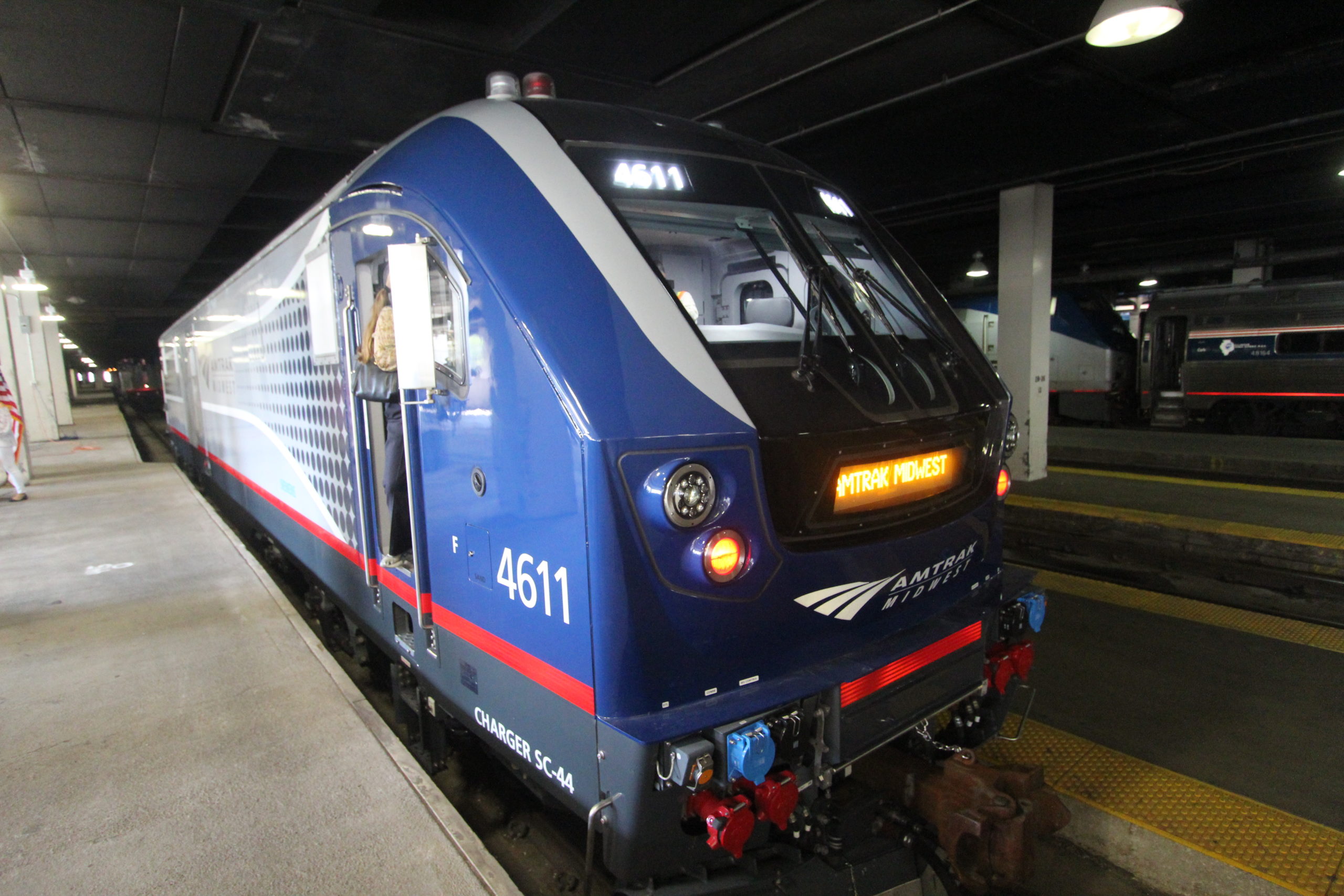
CHICAGO — Amtrak, Siemens, and state of Illinois officials staged a media open house at Chicago Union Station on Monday marking the debut of the first Charger locomotives assigned to Midwest routes.
“Twelve of the 33 ordered Chargers are on the property and I can put ten in service today,” says Mike Yates, Amtrak’s Chicago-based superintendent of locomotives.
Yates tells Trains News Wire that in addition to the units now protecting all Chicago-Milwaukee Hiawatha departures, he expects the new locomotives will lead Chicago-Quincy, Ill., trains this week, followed by regular round-trips between Chicago and Carbondale, Ill., in the near future. The Chicago-Grand Rapids Pere Marquette will be next.
Chargers won’t be assigned to Lincoln Service Chicago-St. Louis trains or the Michigan-sponsored Blue Water and Wolverine round trips until testing of Wabtec’s I-ETMS positive train control system and the two versions of Incremental Train Control installed in Illinois or east of Porter, Ind., on the Michigan line is completed in conjunction with the new locomotives.
Tim Hoeffner, director of Michigan’s rail office, says, “These are new installations, it’s a different locomotive, and the systems have to be merged and integrated with the Siemens software, so we will continue to run 110-mph between Porter and Kalamazoo with the existing P42 locomotives until testing is completed.”
Mike Franke, Amtrak’s senior director, state government contracts, confirms that the same situation exists on Union Pacific’s portion of the Chicago-St. Louis route, where the 110-mph segment between Dwight and Pontiac, Ill., is reverting to 79 mph until the new system is in place.
“Lincoln Service train speeds will rise to 90 mph once track and signal work is completed, then 110-mph once the Federal Railroad Administration verifies that the positive train control system is reliable.
Yates says the Chargers require a separate diesel emission fluid, or urea, for the locomotives to fulfill the Tier 4 emission-compliant standard.
“The mix is one part fluid to ten parts oil. Each has separate tanks which we fill once per day for the Hiawathas,” he says, pointing out the separate receptacles on the side of locomotive No. 4611.














Bring back the Pepsi can scheme …that was the best one ever!
I may be the only one with this opinion, but I think the Genesis locos look best in the orginal pointless arrow paint scheme. It improves a somewhat homely locomotive. As for the new Charger scheme, if all of the ‘dots’ are decals it may well begin to look tattered after a few years. But nothing looks a sharp as a slant-nose E-unit!
Jeffrey, My favorite Amtrak scheme was the red and blue stripes. It came after the “pointless arrow” in the seventies, if I am remembering right. I have never really liked the “three sheets in the wind” scheme they have now.
It seems Amtrak would save money and project a system image if they had a single paint scheme instead of a new scheme with each new type of locomotive.
Ian, you are right about that. I stand corrected.
Look closer. It says “Amtrak Midwest”
reminds me of a bus.
The Charger is a fine looking engine, I think. Look at the picture closely. Do you see the illuminated sign on the front that says “Amtrak Northwest”? I know of no other locomotive anywhere that has such a feature. I hope our model railroad manufacturers are going to build models of this engine. I would buy one in o gauge.
I think “paint scheme” is becoming an anachronism like “dialing” a telephone since elaborate schemes like this are (I assume) produced by an ink-jet printer on a sheet of vinyl that is “wrapped” onto the locomotive.
I liked the old red-nose Phase I scheme, too. It is simple, is adaptable to many different body styles, and there is no reason it couldn’t be used along with the current wavy logo vs. the headless arrow. But I agree, it would be good to settle on just one scheme for the sake of image and recognition.